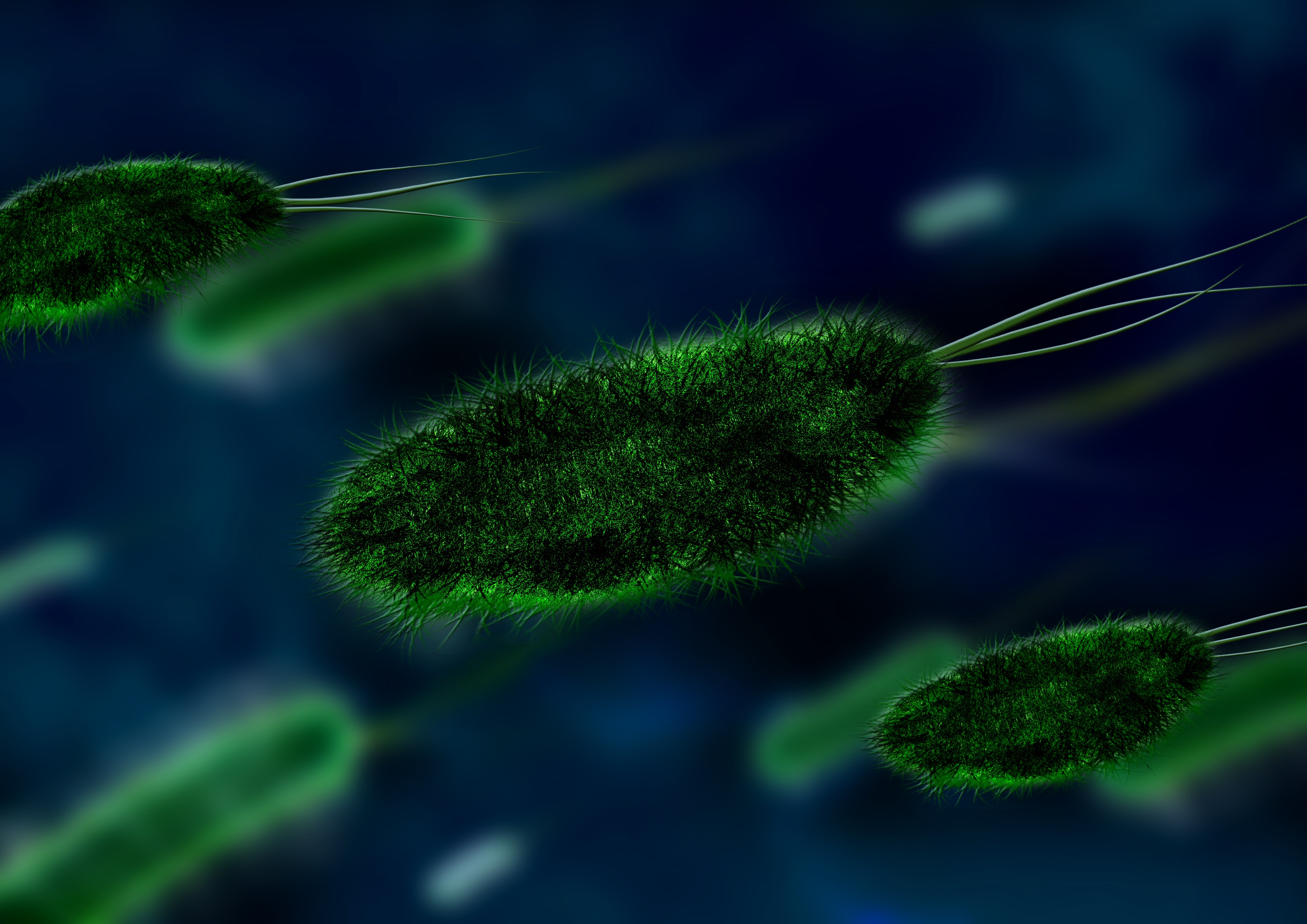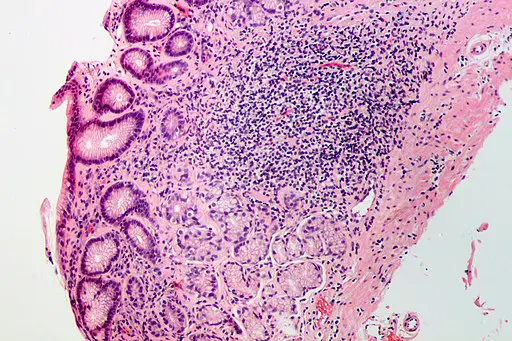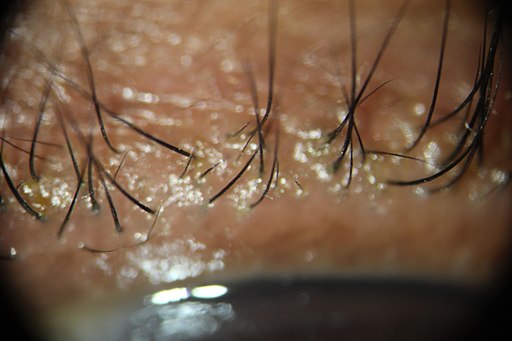List of Diseases caused by Bacteria
Bacteria is a large domain that consists of single-celled prokaryotes. They can be found in virtually all environments (aquatic, terrestrial, the Arctic, etc.) around the world where they may exist as free-living organisms, parasites, or in symbiosis with other organisms in their surroundings.
While it's estimated that there are over one (1) trillion species of bacteria (the vast majority have not yet been identified), only about 5 percent of these are said to cause diseases.
The following is a list of diseases caused by bacteria:
Bacterial Diseases of the Respiratory Tract
Pharyngitis (streptococcal pharyngitis): Inflammation of the pharynx (and tonsils in some cases) - Caused by Streptococcus pyogenes
Scarlet Fever (Scarlatina): Associated with strep infection and characterized by red rashes covering the whole body - It's caused by streptococcus pyogenes
Diphtheria: An infection that affects the mucous membrane of the upper respiratory tract (nose and throat) - It's caused by Corynebacterium diphtheriae
Whooping Cough/Pertussis: A serious infection of the respiratory tract characterized by a hacking cough (a severe type of dry cough) - It's caused by Bordetella pertussis
Tuberculosis: A serious infection that affects the lungs - It's caused by Mycobacterium tuberculosis
Rhinosinusitis (acute or chronic rhinosinusitis) - An inflammation of the nasal cavity and sinuses which may be characterized by an obstruction and swelling of the sinuses - It's caused by a number of bacteria including Streptococcus pneumonia and Haemophilus influenzae
Legionnaires' Disease: A serious form of pneumonia (atypical pneumonia). It affects the lungs and is characterized by coughing and shortness of breath etc. - It's caused by members of the genus Legionella
Q Fever (Query fever): A flu-like disease that affects the lungs and other parts of the body like the liver and heart etc. It's caused by the bacterium Coxiella burnetii
Sinusitis (acute and chronic sinusitis): An inflammation of the upper respiratory tract (especially the sinuses) and may be characterized by swelling of the nasal passages - The bacterium Corynebacterium diphtheriae is one of the organisms responsible for this condition
Otitis (acute otitis media and chronic otitis media): An infection of the ear (inner, middle, and outer ear) that may result from an infection of the respiratory system - Some of the bacteria species responsible for this condition include streptococcus species, staphylococcus species, pseudomonas species, and Haemophilus influenzae
Anthrax: Affects the lungs and other parts of the body (e.g., skin, intestine, etc.) - It's caused by the bacterium Bacillus anthracis
Psittacosis: Affects the lungs and can cause pneumonia - It's caused by the bacterium Chlamydophila psittaci
Pneumonia (pneumococcal pneumonia, typical pneumonias, Chlamydial pneumonia): Affects the lungs and is characterized by fluids or pus in the air sacs. It's caused by bacteria like Streptococcus pneumoniae, Staphylococcus aureus, Klebsiella pneumoniae, Pseudomonas aeruginosa, Acinetobacter species, Mycoplasma pneumoniae, Legionella pneumophila, and Chlamydophila pneumoniae
Diseases of the Reproductive System caused by Bacteria
Gonorrhea: Affects the urethra, throat, and rectum in both males and females - It's caused by the bacterium Neisseria gonorrhoeae
Chlamydia: Characterized by pain and discharge from the vagina and penis -It's caused by the bacterium Chlamydia trachomatis
Urethritis (Gonorrheal endocarditis, gonorrheal arthritis, Nongonococcal urethritis, meningitis): Inflammation of the urethra that causes pain during urination - It can be caused by the Gonococcus and Chlamydia trachomatis bacteria
Pelvic inflammatory disease: Affects the reproductive organs (uterus, ovaries, etc.) of females and is associated with pain during sex or urination - It's caused by a number of bacteria like Neisseria gonorrhoeae and Chlamydia trachomatis
Prostatitis (Acute and chronic bacterial prostatitis): Affects the prostate and is associated with pain in the groin or pain during urination - It can be caused by a variety of bacteria including E. coli, Enterobacter species, Pseudomonas aeruginosa, and Proteus mirabilis among others
Syphilis: Affects the genitals, mouth, and rectum and can spread to other parts of the body (e.g., the nervous system). It's caused by the bacterium Treponema pallidum
Lymphogranuloma Venereum: Affects the genitals, groin, and pelvis. It's caused by the bacterium Chlamydia trachomatis
Chancroid: Characterized by chancroids (painful, open sores) around the genitals. It's caused by the bacterium Haemophilus ducreyi
Bacterial vaginosis: An infection of the vagina that can affect pregnancy. It can occur when there is a change in the balance of the normal vaginal bacteria
Diseases of the Gastrointestinal Tract/Digestive System caused by Bacteria
Typhoid fever (typhoid): Affects the small and large intestine - It is caused by Salmonella typhi (paratyphoid fever is caused by Salmonella paratyphi)
Salmonellosis: Affects the intestinal tract and can cause diarrhea and stomach upset - It's caused by the bacteria Salmonella bongori and Salmonella enterica
Periodontal disease: Gum infection that affects tissues holding teeth in place. - It's caused by several bacteria including Porphyromonas gingivalis, Prevotella intermedia, and Aggregatibacter actinomycetemcomitans.
Peptic ulcer disease and gastritis: Affects the lining of the stomach and the upper part of the small intestine and is characterized by open sores - It's caused by the bacterium Helicobacter pylori
Gastroenteritis: Inflammation of the gastrointestinal tract - It can be caused by various bacteria like Campylobacter jejuni, Clostridium perfringens and some Salmonella species
Cholera: Affects the small intestine and is characterized by diarrhea and dehydration It's caused by the bacterium Vibrio cholerae
Shigellosis (Bacillary dysentery): Affects the gastrointestinal tract - It's caused by several Shigella species including Shigella boydii, Shigella sonnei, Shigella dysenteriae, and Shigella flexneri.
Botulism: May result from food poisoning and may result in paralysis - It's caused by the bacterium Clostridium botulinum
Listeriosis: Mostly caused by consuming contaminated food - It is caused by the bacterium Listeria monocytogenes
Dental caries: Affects teeth and is characterized by damaged teeth. - It's caused by several bacteria including Streptococcus mutans, Lactobacilli, and Streptococcus sobrinus
E. coli infections (enterotoxigenic E. coli, Enteroinvasive E. coli, Enteropathogenic E. coli): Affects the gastrointestinal tract and can spread to other parts and cause extraintestinal disease - These infections are caused by the bacterium E. coli
Duodenal ulcers: Affects the duodenum - It's mostly caused by the bacterium Helicobacter pylori
Ulcerative colitis: Affects the lining of the large intestine - It can be caused by normal a change in the balance of normal bacteria in the colon
Hemorrhoids: Affects the lower rectum and is characterized by swollen veins in this region. It's a complication that can be caused by bacteria that affect the gastrointestinal tract
Skin Disease caused by Bacteria
Acne (Anterior cutaneous nerve entrapment syndrome): Skin disease that affect oil glands - It's caused by Cutibacterium acnes
Dermatitis: Characterized by itching, rashes, drying, and reddened skin. It may be caused by Staphylococcus aureus
Cheilitis (acute or chronic cheilitis): Affect the lips (corners of the lips) and may be characterized by reddened and or swollen patches - It can be caused by Staphylococcal bacteria
Blepharitis: Inflammation of the eyelids - It may be caused by Staphylococcal blepharitis
Folliculitis: Inflammation of hair follicles - It may be caused by Staphylococcus species (e.g., S. aureus) or Pseudomonas bacteria
Furunculosis (boils): Pus-filled bumps on the skin which can be painful - Caused by S. aureus
Scalded skin syndrome (Staphylococcal scalded skin syndrome): A skin infection that may be characterized by blisters and skin peeling - It's caused by S. aureus
Cellulitis: Characterized by red and swollen skin - It's caused by the bacterium S. pyogenes
Impetigo: Skin infection that can result in cellulitis and kidney inflammation etc. - It's caused by the bacterium S. pyogenes
Scarlet fever: Characterized by rashes on the skin - It's caused by group A streptococcus
Rheumatic fever: Associated with Scarlet fever and is therefore caused by Group A streptococcus
Hidradenitis suppurativa: A skin condition characterized by painful lumps under the skin - It has been associated with Staphylococcus lugdunensis
Botryomycosis: A bacterial granulomatous disease that may be caused by bacteria like S. aureus, E. coli, and Streptococcus species, etc.
Pitted keratolysis: Affects soles of the feet, hand, and palm skin - It can be caused by Corynebacterium species
Erythrasma (generalized and interdigital Erythrasma): - Characterized by scaly patches on the skin - It may be caused by Corynebacterium
Urticaria/hives: Characterized by swelling of the skin as well as plaques - It can be caused by Erysipelothrix insidiosa
Skin ulcer: Characterized by open sores - Caused by bacteria like Serratia marcescens, Mycobacterium, and Yersinia pestis
Yaws: A tropical skin infection - It's caused by Treponema species
Leprosy: Characterized by skin lesions and damaged nerves - It's caused by the bacterium Mycobacterium leprae
Other bacterial diseases include:
Tetanus: Caused by Clostridium tetani
Typhus: Caused by Rickettsia prowazekii
Sennetsu fever: Caused by Ehrlichia sennetsu
Rocky mountain spotted fever: Caused by Rickettsia rickettsi
Pinta: Caused by Treponema carateum
Mycetoma: Can be caused by Actinomycotic mycetoma
Haemophilus influenzae: Caused by H. influenzae
Glanders: Caused by Burkholderia mallei
Hansen's disease (leprosy): May be caused by Mycobacterium leprae or Mycobacterium lepromatosis
Buruli ulcer: Caused by Mycobacterium ulcerans
Balantidiasis: Caused by Balantidium coli
Vibriosis: Caused by Vibrio bacteria
Tularemia: Caused by Francisella tularensis
Plague: Caused by Yersinia pestis
Meningitis: Can be caused by bacteria like E. coli, S. pneumoniae, and L. monocytogenes among others
Melioidosis: Caused by Burkholderia pseudomallei
Lyme disease: Caused by Borrelia bacterium
Bacteriology as a field of study
Bacterial Transformation, Conjugation
How do Bacteria cause Disease?
Bacteria - Size, Shape and Arrangement - Eubacteria
Return from Diseases caused by Bacteria to MicroscopeMaster home
References
Bong Suk Shim. (2011). Current Concepts in Bacterial Sexually Transmitted Diseases.
Jones and Bartlett Learning. Infectious Diseases Affecting the Respiratory System.
Yu-Jie Zhang, Sha Li, Ren-You Gan, and Tong Zhou. (2015). Impacts of Gut Bacteria on Human Health and Diseases.
Links
https://www.elsevier.com/books/sexually-transmitted-infections/kumar/978-81-312-2978-1
https://dermnetnz.org/topics/bacterial-skin-infections/
Find out how to advertise on MicroscopeMaster!







